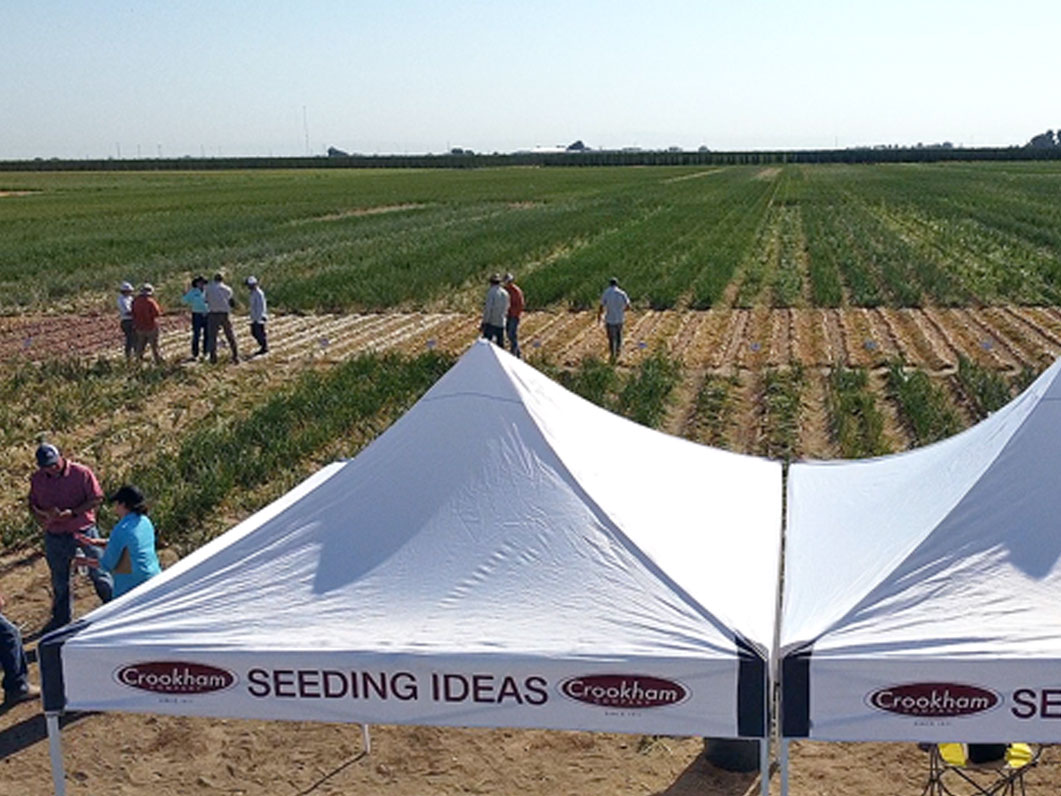
Last week’s Crookham Co. Reveal in Wilder, ID, saw good attendance by Treasure Valley onion growers as well as Crookham’s distribution partners Seedway, Gowan and TS&L.
According to Crookham’s Lyndon Johnson, “All commercial intermediate and long day varieties were on display, along with some pre-commercial varieties being evaluated for different markets around the U.S.”
Lyndon said Crookham Co. “now has a complete lineup for yellow long day onions, beginning with Trident (108 day), Defender (115day), Caldwell (118 day), and Caliber (120 day).”
In addition to the bounty of information available on the trials, there was also an opportunity for the growers to discuss issues that affect the Treasure Valley’s onion industry.

“Conversations were mainly on water and the long periods of heat that we have been experiencing in the Treasure Valley over the last two seasons,” Lyndon said. “Questions on onion water usage and growth at these temperature extremes were popular topics of conversation. Onion water usage at these higher temperatures, 95 and above, can become much lighter in the late growth cycle as the onion slows down its growth at these temperatures. It can be much easier to overwater in these periods, and the use of soil moisture monitors is critical.”
For the seed company, he said, “It was a great time to connect with growers and listen to their concerns. Crookham Co. is very fortunate to have such a great group of customers. When we get together, we can learn a lot from one another, and I am always amazed at the level of dedication and perseverance that each grower brings to every season.”
He added, “The ability to produce quality onions under ever-changing conditions speaks to the adaptability and overall management skills of our growers.”
This season, Lyndon said, has been beset by a variety of weather conditions. “The year was different as we always expect from a weather standpoint. What really stuck out to me was that the growth cycle was compressed. As we exited the middle of June and finally began warming up, the onions were behind by 10-14 days in most cases. This meant that the crop had to accomplish what it normally does in a shorter and hotter period this is the reason for the lower size profile locally.”
And he said, “I am confident in the quality of the onions, and I believe they will store well over the marketing period.”


